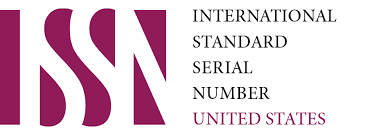State of the Art Review on Hollow Core Slabs
Keywords:
hollow core, slabs, reinforcement concreteAbstract
Numerous advancements in concrete technologies have significantly influenced structural systems. This review provides an overview of the existing body of research literature pertaining to hollow-core slabs. The existing body of literature pertaining to the current research can be classified based on prior investigations conducted on the topic of weight reduction of slabs. This paper incorporates the principal findings derived from prior research.
References
Abdullah, J. A., & Salih, O. A. (2013). ISSN : 1813-162X Tikrit Journal of Engineering Sciences available online at : http://www.tj-es.com Behavior and Design of Partially-Encased Composite Beam-Columns ةصلاخلا. 20(6), 24–36.
Al-Shaarbaf, I. A., Al-Azzawi, A. A., & Abdulsattar, R. (2018). A state of the art review on hollow core slabs. ARPN Journal of Engineering and Applied Sciences, 13(9), 3240–3245.
Al-Yassri, L. S., Ali, A. Y., & AL-Khafaji, M. M. (2017). Experimental investigation for the behavior of hollow core concrete slab reinforced with hybrid reinforcement. Al-Qadisiyah Journal for …, 10(2), 214–225. http://qu.edu.iq/journaleng/index.php/JQES/article/view/287
Alaa Abdelaal, A. (2017). Scholarship at UWindsor Scholarship at UWindsor Shear Strengthening of Prestressed Hollow Core Slabs using Shear Strengthening of Prestressed Hollow Core Slabs using Externally Bonded Glass Fibre Reinforced Polymer Sheets Externally Bonded Glass Fibre Rei. https://scholar.uwindsor.ca/etd
ARAÚJO, D. L., & PINTO, G. D. C. (2020). Fire behavior of shallow prestressed hollow core slabs from computational modeling. Revista IBRACON de Estruturas e Materiais, 13(2), 398–432. https://doi.org/10.1590/s1983-41952020000200011
Brazzale, N., Kennett, D. I., & Marshall, J. B. (2017). Benefits of Top Strand and Steel Fibres in the Design and Manufacture of Hollow-core Precast Floor Slabs . 1998.
Brito, S. H., Mahmoud, K., & El-Salakawy, E. F. (2022). Behavior of Reinforcing Bar Connection of Hollow-Core Slabs to Steel Beams under In-Plane Forces. CivilEng, 3(4), 831–849. https://doi.org/10.3390/civileng3040048
BROO, H., & LUNDGREN, K. (2002). Finite element analyses of hollow core units subjected to shear and torsion. December, 1–70.
Connections, S. B. (2020). Slabs-Rc Beam Connections.
Deeb, A. N., Tarkhan, M. A., & El-Tehewy, E. M. (2016). Shear capacity of pre-stressed hollow core slabs under concentrated load. International Journal of Engineering Sciences & Research, 5(1), 855–863.
Del Río-Bonnín, S., Montoya-Coronado, L. A., Ribas, C. R., Ruiz-Pinilla, J. G., & Cladera., A. (2022). Using iron-based shape memory alloy rebars as hogging prestress for continuity of Hollow-Core Slabs. Fib Symposium, September, 795–802.
Derkowski, W., & Surma, M. (2015). Composite Action of Precast Hollow Core Slabs With Structural Topping. Technical Transactions, 3-B, 15–29. https://doi.org/10.4467/2353737XCT.15.159.4334
Eom, T.-S., Hwang, I.-H., & Park, T.-W. (2015). Evaluation of Shear Strength of Non-prestressed Reinforced Concrete Hollow-Core Slabs. Journal of Korean Society of Hazard Mitigation, 15(6), 43–54. https://doi.org/10.9798/kosham.2015.15.6.43
FLORUŢ, S. C., NAGY-GYÖRGY, T., STOIAN, V., & DIACONU, D. (2009). Strengthening of hollow core precast slabs using FRP composite materials – procedure , testing and rating. Proceedings of the 11th WSEAS International Conference on Sustainability in Science Engineering, May 2014, 496–501.
Hameed, Y. M., & Ismael, M. A. (2021). Structural Behavior of Hollow-core Reinforced Self-compacting Concrete Two-way Slabs. IOP Conference Series: Materials Science and Engineering, 1076(1), 012120. https://doi.org/10.1088/1757-899x/1076/1/012120
Haruna, S. I., Gora, A. M., & Malami, S. I. (2018). Geometric Impact on the Behaviour of Composite Precast Prestressed Concrete Hollow Core Slab. 4(1), 1–11.
Hosny, A., Sayed-Ahmed, E. Y., Abdelrahman, A. A., & Alhlaby, N. A. (2006). Strengthening precast-prestressed hollow core slabs to resist negative moments using carbon fibre reinforced polymer strips: An
Kankeri, P., Chellapandian, M., & Prakash, S. S. (2017). Bonded Overlay Strengthening of Hollow Core Slab with and without Interface Shearkeys Connection. 3rd International Symposium on Connections between Steel and Concrete (Germany), September 27th-29th.
Mahmoud, K., Foubert, S., & El-Salakawy, E. (2016). Strengthening of
Maleknia, M., Biklaryan, M., & Radmehr, M. (2021). Effect of FRP Sheets Length on the Ultimate Loading Capacity of CFRP and GFRP Strengthened Hollow-Core Slabs by the Finite Element Method. 12(13), 5042–5052.
Meleka, N. N., Tayel, M. A., & Heiza, K. M. (2017). Behavior of Precast Prestressed Hollow Core Slabs With Openings: Experimental Study. ERJ. Engineering Research Journal, 40(4), 325–329. https://doi.org/10.21608/erjm.2017.66358
Menezes, F., Filho, D. A., & Ferreira, M. D. A. (2020). V.1 n.1.
Mhalhal, J. M. (2017). Prestressed Precast Hollow-Core Slabs with Different Shear Span to Effective Depth Ratio. Wasit Journal of Engineering Sciences, 5(2), 1–11. https://doi.org/10.31185/ejuow.vol5.iss2.53
Mitasov, V. M., Statsenko, N. V., Sametov, F. K., & Kurbonov, A. M. (2019). Crack Strength of Hollow Core Slabs: Experimental Research. The Russian Automobile and Highway Industry Journal, 16(3), 366–377. https://doi.org/10.26518/2071-7296-2019-3-366-377
Nabil, A., & Mohamed Heiza, K. (2018). Pphc Slabs Strenthened With Different Types of Concrete Toppings. Fifteenth International Conference on Structural and Geotechnical Engineering, December 2018, 1–14. https://www.researchgate.net/publication/333247829
Nguyen, H. T. N., & Tan, K. H. (2020). Effect of steel fibers on fire endurance of extruded hollow-core slabs. 353–362. https://doi.org/10.14264/8a10a18
Pachalla, S. K. S., Dhara, J. S., & Prakash, S. S. (2019). Experimental study on flexural behavior of NSM and external bonded FRP strengthened pretensioned precast hollow core slabs. Journal of Structural Engineering, 46(2), 1–14.
Pachalla, S. K. S., & Prakash, S. S. (2015). Behaviour of Synthetic Fibre Reinforced Prestressed Hollowcore Slabs under Flexure-Shear. 2nd R.N. Raikar International Conference and Banthia- Basheer International Symposium on Advances in Science and Technology of Concrete, June 2016, 1–6.
Pajari, M. (2004). Pure torsion tests on single hollow core slabs. VTT Building and Transport.
Park, M. K., Lee, D. H., Han, S. J., & Kim, K. S. (2019). Web-Shear
Ref: Proceedings of the 8. (2008). September, 17–20.
Rosenthal, I. (1978). Full Scale Test of Continuous Prestressed Hollow-Core Slab. PCI Journal, 23(3), 74–81. https://doi.org/10.15554/pcij.05011978.74.81
Sabr, Y. N., & Jarallah, H. K. (2016). و م ك ن م او ن م آ ني ذ لا ُ الل َّ "* تا ج ر د م ل ع لا او ت و أ ني ذ لا. March 2019.
Saleh, A. R., & Abid Shahatha, M. A. (2014). Optimal Design of Prestressed Concrete Hollow Core Slab Panels. Kufa Journal of Engineering, 5(1), 33–50. https://doi.org/10.30572/2018/kje/511241
Scott, N. L. (1973). Performance of Precast Prestressed Hollow Core Slab With Composite Concrete Topping. J Prestressed Concr Inst, 18(2), 64–77. https://doi.org/10.15554/pcij.03011973.64.77
Thienpont, T., Van Coile, R., De Corte, W., & Caspeele, R. (2023). Capacity and failure modes of restrained hollow core slabs taking into account compressive membrane action. Structural Concrete, June. https://doi.org/10.1002/suco.202201015
Vasilyev, A. S. (2019). Research of stressed-state stiffened hollow strengthened concrete slabs in cracked condition. IOP Conference Series: Materials Science and Engineering, 687(3). https://doi.org/10.1088/1757-899X/687/3/033019
Wicaksana, A., & Rachman, T. (2018). 済無No Title No Title No Title. Angewandte Chemie International Edition, 6(11), 951–952., 3(1), 10–27. https://medium.com/@arifwicaksanaa/pengertian-use-case-a7e576e1b6bf
Wright, H. E., & Burns, N. H. (1974). Deflection of Double Tees and
Downloads
Published
Issue
Section
License

This work is licensed under a Creative Commons Attribution-NonCommercial 4.0 International License.
User Rights
Under the Creative Commons Attribution-NonCommercial 4.0 International (CC-BY-NC), the author (s) and users are free to share (copy, distribute and transmit the contribution).
Rights of Authors
Authors retain the following rights:
1. Copyright and other proprietary rights relating to the article, such as patent rights,
2. the right to use the substance of the article in future works, including lectures and books,
3. the right to reproduce the article for own purposes, provided the copies are not offered for sale,
4. the right to self-archive the article.












